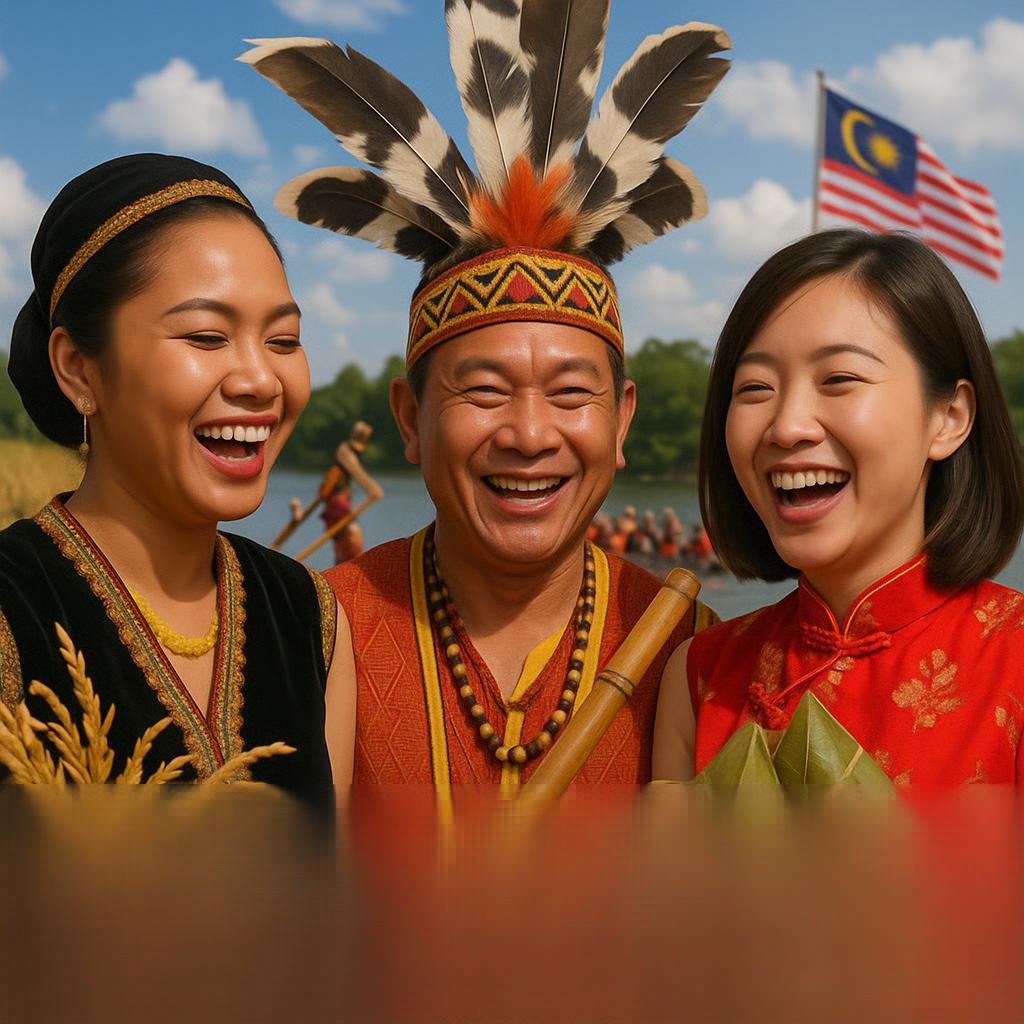
KUALA LUMPUR, June 2: As Malaysia wraps up a remarkable long weekend, the echoes of joy and tradition linger in the air.
With a mix of cultural and royal celebrations coinciding with the start of the mid-term school holidays, the past few days showcased the nation’s rich multicultural heritage in full force.
Starting with Kaamatan in Sabah, this year’s month-long festival which began on May 1, culminated joyously on May 30 and 31. “Kaamatan montok Toinsanan” or Kaamatan for All was the all-inclusive theme for the annual festival although it is primarily an occasion for the Kadazan-Dusun and Murut communities to express gratitude for their bountiful rice harvests.
The festival usually features Sumazau dance performances, exhilarating buffalo races, and the traditional Unduk Ngadau beauty pageant, honouring the legendary Huminodun, the legendary figure in Sabah’s Kadazandusun mythology.
Huminodun is known as the daughter of Kinoingan, a divine being, and is central to the story of Kaamatan, the harvest festival celebrated in Sabah.
According to legend, a great famine struck the land, and the only way to save the people was through a divine sacrifice. Huminodun, known for her wisdom and compassion, willingly offered herself. From her body, various crops—including rice—sprouted, ensuring the survival of her people.
Her spirit, known as “Bambarayon,” is believed to reside in every grain of rice, making rice sacred in Kadazandusun culture. The story of Huminodun is honoured during Kaamatan, which includes rituals, celebrations, and the Unduk Ngadau beauty pageant, a tribute to her great sacrifice.
Then came Gawai Dayak in Sarawak (June 1 and 2), a time of thanksgiving and renewal for the various Dayak ethnic groups, including the Iban, Bidayuh, Kayan, Kenyah, Kelabit and Orang Ulu communities. Longhouses across the state came alive with rituals, music, and communal celebrations to mark Gawai Dayak, the community’s annual harvest festival.
Over the years, Gawai Dayak has grown to become a powerful symbol of unity, hope, and aspiration for the Dayak community, the majority ethnic group in Sarawak.
It was a time to give thanks for a bountiful rice harvest and to usher in a new year of prosperity and unity.
Kicking off on the evening of May 31 with the Muai Antu Rua ceremony, it was a ritual to drive away greed and misfortune where unwanted items in the longhouses were collected and discarded to symbolically remove negative vibes to ensure positive times ahead.
Families were reunited for ritual blessings, feasts, and the legendary drink tuak (rice wine), reaffirming the importance of preserving indigenous traditions.
The Sarawak state-level Gawai Dayak celebrations this year saw the Orang Ulu community becoming hosts of the Gawai Dayak Open House at the Borneo Convention Centre Kuching (BCCK) on June 1. The open house was described as not only a platform to highlight Dayak culture and traditions, but also a testament to Sarawak’s racial harmony.
While Sabah and Sarawak celebrated their harvest traditions, Chinese Malaysians marked the Duanwu Festival (May 31), better known as the Dumplings and Dragon Boat Festival. The joy of sharing zongzi (sticky rice dumplings) added another layer of festive energy.
On Monday, June 2, saw nationwide tributes to the King of Malaysia on his official birthday. At Istana Negara, His Majesty Sultan Ibrahim attended an investiture ceremony to present federal awards, medals and honours to 116 recipients.
There was much pomp at the national palace in Kuala Lumpur where the king inspected a guard of honour mounted by members of the First Battalion of the Royal Malay Regiment (RAMD). There was also a 21-gun salute by the 41st Battery of the Royal Artillery Regiment.
The long weekend was also a perfect start to the mid-term school holidays. With schools entering their mid-term break, families found the perfect opportunity to participate in these festivities, travel, and reconnect with traditions.
As Malaysians return to their daily routines later this week, the long weekend left behind a renewed sense of unity. Whether through the harvest festivals, royal tributes and celebrations, joy of eating dumplings or savouring the school holidays, one thing remains clear — Malaysia thrives because of its diversity, harmony, and shared pride.
WE